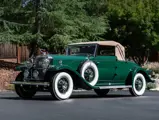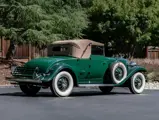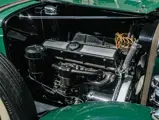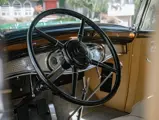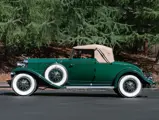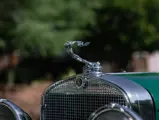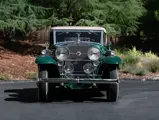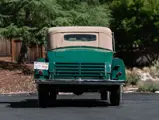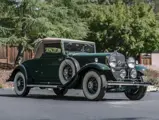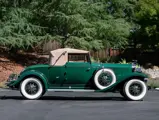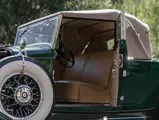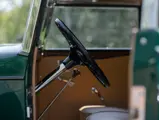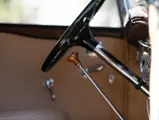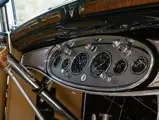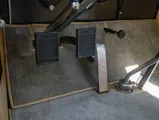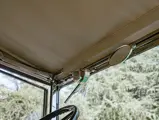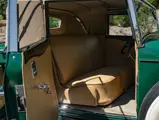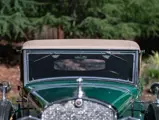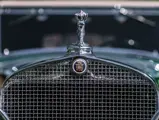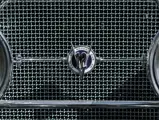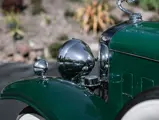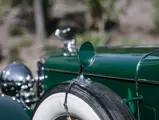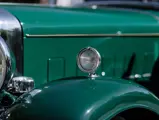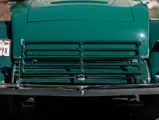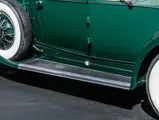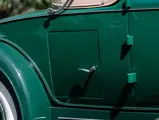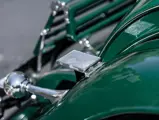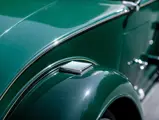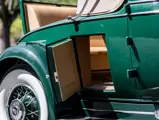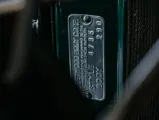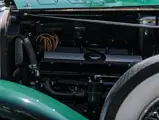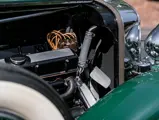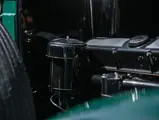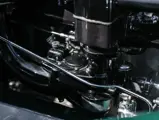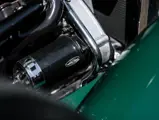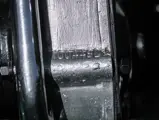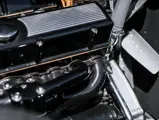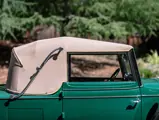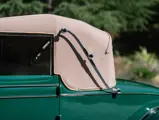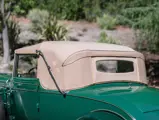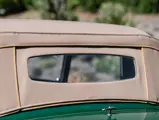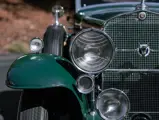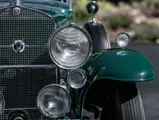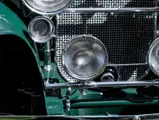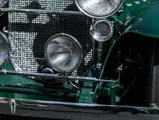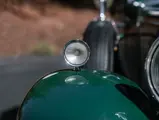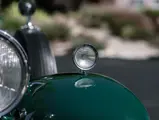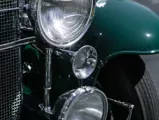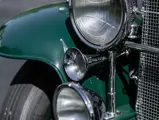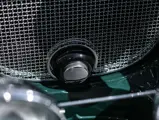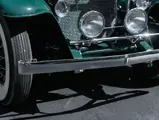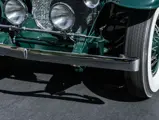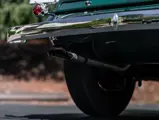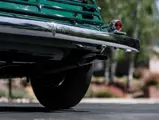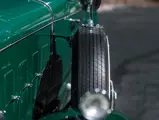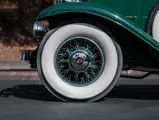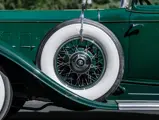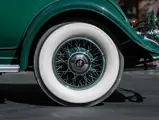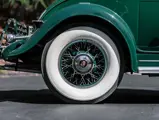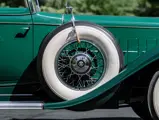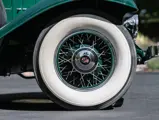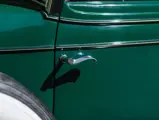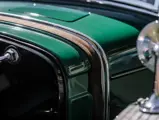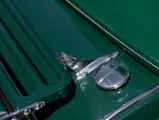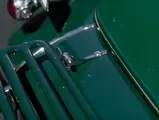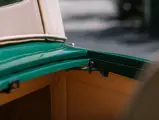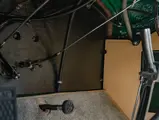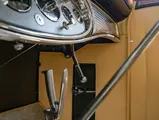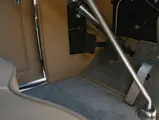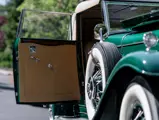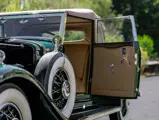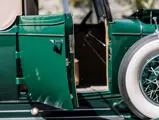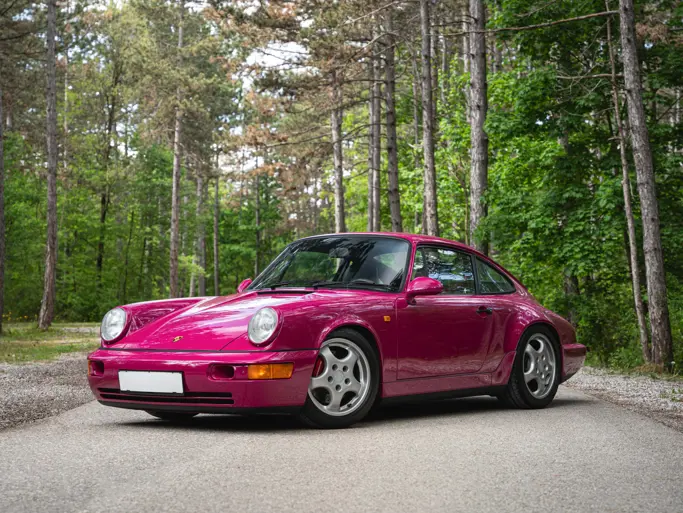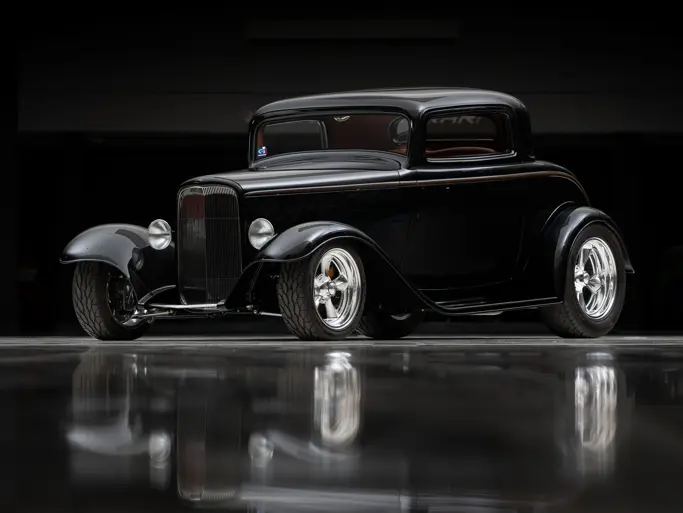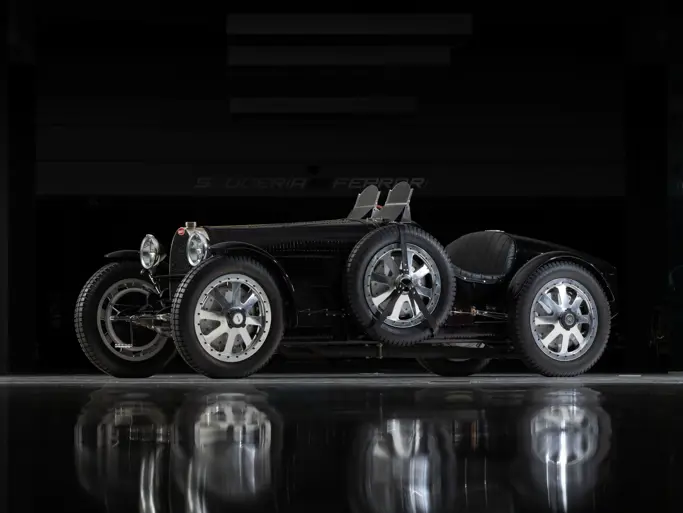Hershey 2022
1931 Cadillac V-12 Convertible Coupe by Fleetwood
{{lr.item.text}}
$198,000 USD | Sold
 | Hershey, Pennsylvania
| Hershey, Pennsylvania
{{internetCurrentBid}}
{{internetTimeLeft}}

- Fully restored example in a rich two-tone green with hand-painted cream pinstriping over saddle leather upholstery and canvas soft-top
- Powered by a 368-cu.-in. V-12 engine producing 135 hp and 285 lb.-ft. of torque; selective synchromesh three-speed manual transmission
- Painted steel center-lock wheels with stainless steel spokes and polished Cadillac hubcaps
- Wonderful period touches of dual, fender-mounted spares, Flying Goddess radiator mascot, and Pilot Ray driving lights, which pivot with the steering linkage
The mid-1920s were a heady time for the American automotive industry. Year over year, it seemed the internal combustion engine itself was being reinvented. When just a few years earlier most cars sported four-cylinder engines, offerings from some manufacturers numbered up to 16 cylinders.
Not to be outdone, Cadillac, arguably America’s most opulent and exclusive manufacturer, premiered its own 12- and 16-cylinder designs in 1930. The V-12 engine was reported as being identical to the V-16 except for having four fewer cylinders. It featured a cast iron and aluminum crankcase, four main bearings, and mechanical valve lifters with hydraulic silencers. The engine’s displacement measured 368 cubic-inches and was rated at 135 horsepower and 285 pound-feet of torque. It could propel the “Standard of the World” to a claimed 80 mph, placing it among the fastest automobiles of its day. All V-12s were equipped with a selective synchromesh three-speed manual transmission which negated the need for double-clutching and enabled smoother gear selection. As part of its publicity tour in 1931, a V-12 roadster piloted by Cadillac test chief Willard Radar had the honor of pacing the Indianapolis 500 in the Memorial Day Classic.
Of all the custom coachbuilders who created bodies for Cadillac chassis, none is more closely linked to the marque than Fleetwood. While today the name is associated with Cadillac’s top models, in the past it represented the design and construction of bespoke bodies. The V-12 Cadillacs of the period were offered in two different wheelbases: 143 inches for seven-passenger models and 140 inches for five-passenger models. The V-12-equipped cars also featured hoods five inches longer than their V-8 counterparts.
Fleetwood’s team of craftsmen were well known for executing warm interior environments filled with hundreds of upholstery options and swaths of rich wood finishes. Fleetwood designed the hardware, lighting equipment, and opulent flourishes such as vanity cases; all palpably rich in quality and character. The V-12’s instrument panel was also slightly different from the V-8’s. The center was adorned with engine-turned panels on both sides and lovely wood details carried to the upper doors.
One of these meticulously engineered examples of American opulence is presented here. This 1931 Cadillac Series 370-A is said to have recently received a full nut-and-bolt restoration to exacting standards. It wears a two-tone green finish with hand-painted cream pinstriping over saddle leather upholstery and a canvas convertible top. The V-12 puts its power to the road via wide whitewall tires mounted to painted steel center-lock wheels with stainless steel spokes and polished Cadillac hubcaps.
This Fleetwood-bodied Convertible Coupe features the desirable six-wire-wheel appointment with dual, fender-mounted spares, a staggering $240 option in 1931. Other wonderful period features include the Flying Goddess radiator mascot, optional, fender-mounted, locking, rearview mirrors, and a green luggage rack. This Cadillac also features Pilot Ray driving lights, which are connected to the steering linkage and pivot as the car turns. A leather-trimmed rumble seat and golf-bag door round out the luxury furnishings.
This wonderfully restored example of the height of 1930s American luxury is truly impressive whether on display or charging down the road.

